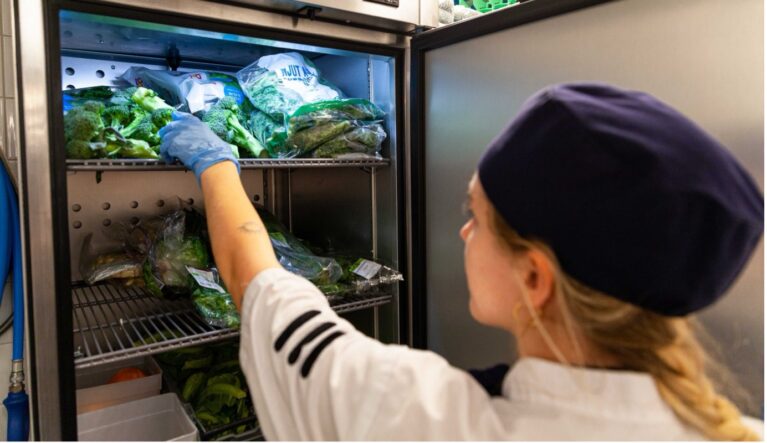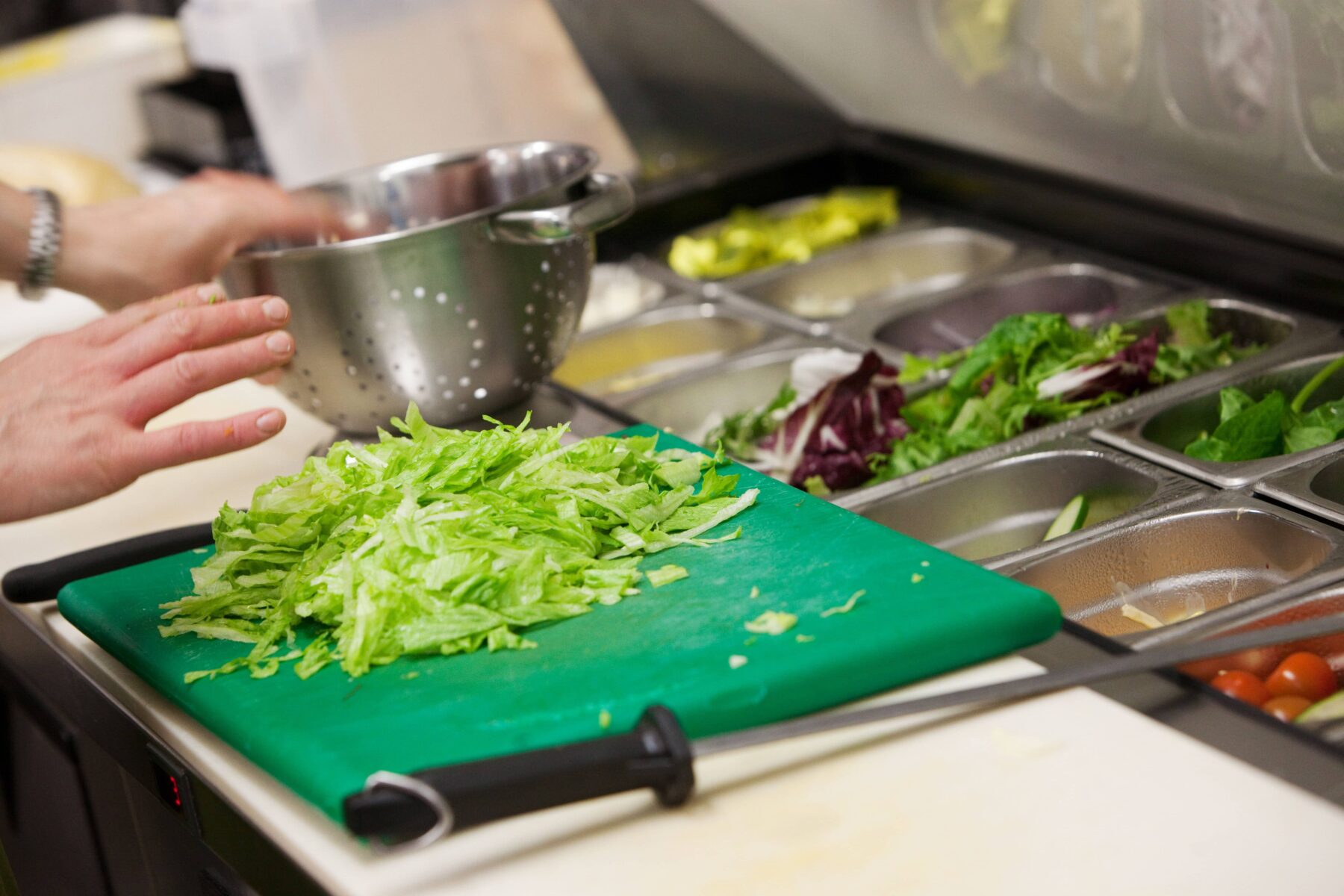Why you should choose True Refrigeration’s upright cabinets


However, as a professional caterer, ensuring you can sate your customers’ appetites for all things green and healthy while avoiding the dreaded soggy salad leaves throughout your entire service can be a major challenge.
Temperature is the key to keeping your salad ingredients fresh, but to keep them crispy, it’s crucial to ensure that you keep your leaves as dry as possible before storing them in your refrigerator. The cells in salad leaves contain mostly water, which means that rinsing them, before plunging them into iced water, will crisp them up. Once this has been done, gently pat your leaves dry with a paper town or use a salad spinner to get rid of any excess moisture, before storing them.
For cucumbers, tomatoes and other ‘wet’ vegetables, standing them in a sieve or colander for a few minutes before storing them will again, help any excess liquid to drain off before you lock in their freshness and flavour. Whatever you do, don’t add salt or seasoning until right before serving, as this can draw out moisture. Similarly, adding dressing in advance will also result in soggy ingredients, so leave this step until right at the end of preparation.
While the above steps will help you minimise moisture on your ingredients during preparation, the way they are stored can also have a big impact on the finished plate of food. So, you need refrigeration equipment in which you have the confidence that they will keep your ingredients fresher for longer.
They come with coated evaporators, high-density ecomate insulation and foam-insulated lids and hoods which help to maintain colder holding temperatures and minimise condensation, to keep your leaves fresh, crisp and full of flavour. And all come with a full-length, removable cutting board, making it easy to replenish your pans on the go. It all adds up to give you the ability to create the perfect salad, every time.
Caesar Salad – An all-time classic, the simplicity of the Caesar Salad has led it to stand the test of time. The combination of Romaine lettuce and croutons, dressed with parmesan cheese, lemon juice, olive oil, egg, Worcestershire sauce, garlic and black pepper is traditionally prepared tableside. Although there are several theories about its origin, its creation is generally attributed to Caesar Cardini, an Italian immigrant who ran restaurants in Mexico and the US.
Insalata Caprese – Literally translated as the ‘salad of Capri’, this classic Italian dish comprises just three core ingredients, which mimic the colours of the Italian flag. Slivers of fresh buffalo mozzarella and green basil leaves nestle between slices of plump red tomato. The dish is finished with a simple drizzle of olive oil, a pinch of salt and a splash of sweet balsamic vinegar.
Greek Salad – A staple of the fabled Mediterranean diet, Greek Salad is full of colour and contrast. Dark olives, red tomatoes, salty Feta cheese, thinly-sliced cucumber and red onion combine with tart garlic-based vinaigrette to pack a hearty punch of flavour.
Salade niçoise – Originating from the French city of Nice, the classic version of this salad comprises t is traditionally made of tomatoes, hard-boiled eggs, Niçoise olives and anchovies, dressed with olive oil. Modern variations include cold tuna, string beans, red onion and baby leaves.
The Waldorf Salad – Created as a signature dish by the Waldorf Hotel and immortalised by hapless guest house owner Basil in Fawlty Towers, this classic salad is a simple but mouth-watering combination of celery, walnut, apple and grape in a light mayonnaise. It doesn’t, contrary to what John Cleese might think, contain any Waldorfs.